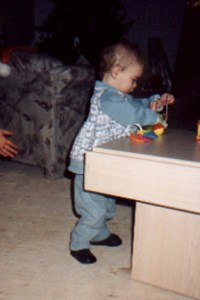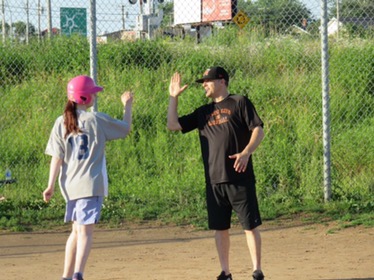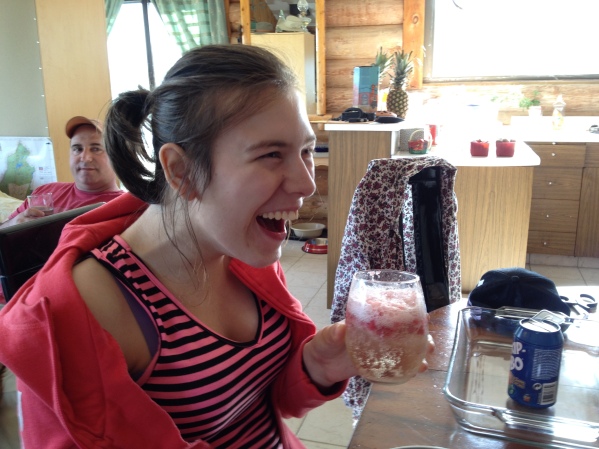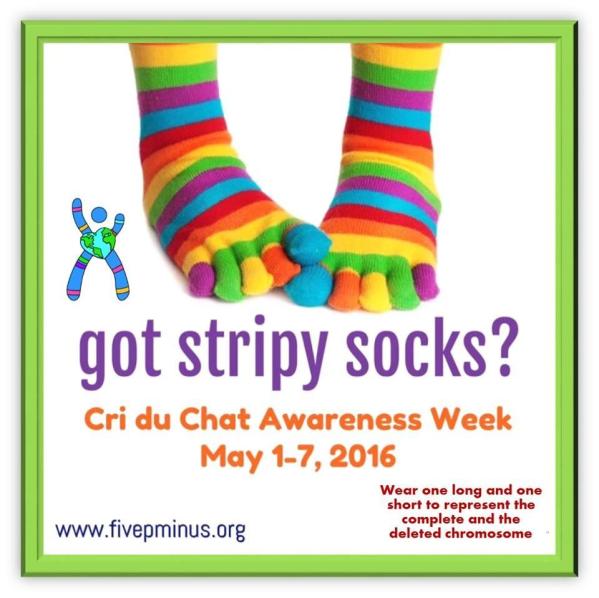This week I’m reminded once again that mentors come in various forms.
Personally, when I face a new challenge or if I start doubting in my abilities to complete a task, I ask myself, ” What would Emily do?”
Just this thought is normally enough to help me recenter myself and allow me to continue and be successful.
My dear Emily…
In October 1999, we were told that you would never walk, talk, recognize us, understand us or show emotions. We were told that you would require to be tube fed.
I remember saying that you knew us and recognized our voices.
The answer from the genetic counselor was harsh. You want to believe she is recognizing you but in reality she isn’t… your daughter can’t do that.
It wasn’t my imagination!
In our home we say “can’t do that yet!”
That way, we know that there is always a possibility…
Last week, Emily and I received our certificates for completing our Level 2 courses in American Sign Language.
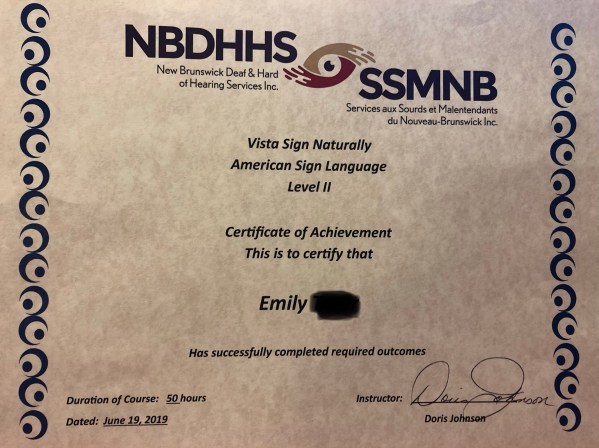

This officially gives Emily and I a 3rd language.
English, French and ASL
How about that for never talking and understanding us?
Tenacity and determination
My daughter has been teaching me amazing lessons over the last 21 years.
She is my life coach, my mentor.
Emily has overcome so much in her life and being with her on her journey has changed me.
Emily has taught me, through example, that if I want something bad enough I should keep trying!
She has taught me that complaining and quitting would never get me anywhere but that pulling myself back-up and trying again would.
When nearing my break point, I remind myself how badly Emily wanted to walk and how over 13 months, she tried every single day.
On average a couple of times per hour for 10 to 12 hours a day.
Let’s do the math, shall we?
A very small 3 year old girl, fell over 8,000 times but pulled herself back-up and tried again!
What about you?
How quickly do you abandon what you are trying to learn or achieve?
How many times would you pull yourself back-up?
💜💜💜💜💜💜💜💜💜💜💜💜💜💜💜
This is only a fragment of Emily’s story and I’m so glad to be able to share it with you all.
Find more about about Cri du Chat syndrome at 5p- Society
Emily has a her own page in the family stories , you can find it here: Emily
If you want short updates and timely pictures of the little things that are happening in our life, please like and follow Lessons from my daughter‘s page on Facebook.
You can also find me on Twitter at @plebrass
If you haven’t had a chance yet to see some of Emily’s artwork, please go see her Facebook page, if you like it, please hit that like button and share it with your contacts, friends and family.

